首页>>Drones>Experience and lessons learned from drones in the Russo Ukrainian War, guide to purchasing drones/UVA
Experience and lessons learned from drones in the Russo Ukrainian War, guide to purchasing drones/UVA

Introduction
From Chechnya to Georgia, and then from Syria to Ukraine, the Russian army has been fighting all along. As a traditional military power, the Russian military has both rich military theoretical guidance and practical battlefield experience, and is said to be able to quickly achieve its strategic goals in "special military operations". However, three years later today, what we see is that the Russian military's expected "blitzkrieg" has transformed into a grueling "trench warfare"; In the context of conventional war characterized by tanks, armored vehicles, mobile artillery and other mechanization, commercial four axis UAVs (including FPVs for entertainment) have poured in, becoming the most eye-catching combat element in the Russia-Ukraine conflict. In the confrontation between the two armies, the Russian unmanned aerial vehicle (UAV) is somewhat passively engaged in an UAV arms race with the Ukrainian army. What is the underlying reason behind this?
Development history
(1) From 1950 to 2010, as early as the 1950s, the Soviet Union began the development of unmanned aerial vehicles, initially for air defense training (such as aerial targets), and later expanded to reconnaissance. However, the field of drones is not a priority for national defense development. When the Soviet Union disintegrated in 1989, Russia had no inheritable drone project reserves.
Due to financial constraints, from 1990 to 2005, except for a very small number of unmanned aerial vehicle projects (including outsourcing), the localization of unmanned aerial vehicle development was basically stagnant, while the development of unmanned aerial vehicles in the West was booming at this time, leading to further widening of the technological gap between Russia and the West. After the Army Aviation was transferred to the jurisdiction of the Air Force in 2002, Russian drone development lost its main potential customers.
Given that Russia has a land area of 17 million square kilometers and possesses 22000 kilometers of land borders and 37600 kilometers of coastline, monitoring and tracking of border areas has naturally become the main task of drones; In addition, Russia has no need for overseas military deployment and does not seek expeditionary operations, so using drones to collect intelligence and reconnaissance has practical value. Even if they are shot down, it will not touch the bottom line of war between the two sides.
(2) From 2010 to 2022, with the diffusion of drone technology and the good performance of drones in recent local wars, Russia gradually realized the importance of drones in modern warfare and began to strengthen its own drone technology research and development. Considering its successful development of complex aviation platforms such as the Su-57 fighter jet, Russia should be able to easily master the capabilities required for designing and producing military drones. However, there are technical shortcomings in key technologies closely related to drones, such as optical equipment, electronic components, and engines. In addition, the Russian military also lacks clear tactical and technical indicators and requirements for unmanned aerial vehicles.
From 2014 to 2015, with the aim of standardizing the command and control system and promoting the integration of unmanned aerial vehicles with combat systems of various branches of the military, while also building a common vision for the government, manufacturing industry, and users, the Russian Ministry of Defense issued two guiding documents: the "Advanced Military Robot Development Plan by 2025" and the "Concept of Unmanned Aerial Vehicle Combat Development". Among them, emphasis was placed on the effectiveness of reconnaissance, the software and hardware of the platform, and the ground command system. Subsequently, the Russian military formed unmanned aerial vehicle squadrons in each division or brigade of motorized infantry and airborne troops, hoping to provide reconnaissance information for grassroots combat units.
Relying on the global supply chain, Russia has established its own drone industrial complex. Although the localization rate is only 20%, by the time the Russia-Ukraine conflict broke out (February 2022), the industry had provided nearly 3000 reconnaissance UAVs of different types to the Russian armed forces.
(3) From 2022 to now, after the outbreak of the Russia-Ukraine conflict, the sanctions of western countries completely paralyzed the Russian UAV supply chain. In addition, due to insufficient research and development funds, manpower, and technological capabilities, the entire drone industry is unable to support the needs of the Russian military on the battlefield, making the "2030-2035 Unmanned Aerial Vehicle Development Strategy" released in 2023 a castle in the air.
In the early stages of the war, the Ukrainian army achieved impressive results with the TB-2 military drone, while the Russian army relied on multi-layered air defense systems, which quickly made the TB-2 disappear from public view. The struggling Ukrainian army shifted its focus to commercial quadcopters, continuously observing the opponent's position, movement, and battlefield changes. As the war continues, Russia has extensively adopted commercial drones, enhancing its surveillance capabilities on the front lines. The gap between the Russian and Ukrainian armies in terms of drones is rapidly narrowing, but the Ukrainian military still has an advantage in integrating drones into its command system.
In the autumn of 2022, the Russian military began large-scale use of Iran's Shahed unmanned aerial vehicles (including cruise missiles), which, with a range of hundreds of kilometers, anti-interference systems, and low altitude flight capabilities, caused heavy damage to high-value targets in Ukraine. At the same time, the Russian military also utilizes its powerful electronic warfare capabilities to modify domestically produced drones such as the Orlan-10 for electronic warfare, in order to interfere with the communication and navigation of Ukrainian drones. In 2023, the Russian military achieved a numerical advantage in first person unmanned aerial vehicles (FPVs) in key frontline areas. FPV drones provide precise strike capabilities at the tactical level and also support ground forces in destroying armored vehicles and other targets.
In this conflict, the relative advantages of the Russian Ukrainian military in electronic warfare and drones have changed hands multiple times, and both sides have gone through a cycle of innovation and adaptation. The development of these tactics and technologies has intensified the fierce struggle in the land domain. The fiber optic drones that have recently appeared on the Russia Ukraine battlefield are a new product of the two sides' struggle. At the same time, facing a large number of cheap small drones, both Russia and Ukraine are further developing and enhancing their anti drone capabilities.


Experience and Lessons Learned
(1) Focusing on the development of small unmanned aerial vehicles, even though the drones flooding the Russian Ukrainian battlefield are low-cost and inexpensive commercial drones, Russia still has a special preference for the development of military drones. According to reports, high-altitude long-range Altius and Okhotnik combat drones are undergoing testing and evaluation, with mass production planned for 2025. Although commercial drones are susceptible to electronic interference, easily detectable signal sources, and have limited nighttime flight capabilities, their advantages are also evident given the enormous cost of warfare, such as easy accessibility, strong substitutability, modifiability, good maneuverability, and low cost. The 2020 Nagorno Karabakh War demonstrated the role of military drones in changing the course of warfare, especially the decisive strike after military drones gained air superiority; The Russia-Ukraine conflict highlighted the military value of commercial UAVs in positional warfare, especially increased the dimension of air attack for ground force defense and attack. Observing the combat effectiveness of drones from these two local wars should not be underestimated, but should be combined with the specific forms of the war to study the capabilities and values of different combat elements, and ultimately achieve strategic goals.
Unlike Russia, Ukraine's unmanned aerial vehicles have an ecosystem of encouragement from the government and more civilian forces, and their tactical innovation benefits to a considerable extent from this. The Ukrainian military can rely on volunteers and amateur enthusiasts to modify and test different drones, while also training pilots for frontline troops. On the other hand, small tactical units of the Russian military can only attempt to fly on their own. Although there are also civilian crowdfunding donation channels, most of them lack similar technical cooperation. In addition, in the early stages of the war, the senior management of the troops did not encourage or oppose the attitude of commercial drones. The combat effectiveness can be imagined, not to mention the innovative tactics of combining ground operations, air defense equipment, and drones.
(2) Many tactical cases emerged in the Russia-Ukraine conflict of UAV tactical development, such as: in July 2024, a Russian Mi-8 helicopter was hit and shot down by FPV; Both sides' tanks or armored personnel carriers were repeatedly hit or destroyed by drones. The recently released Ukrainian military drone operation manual has amazed the innovative tactics used by the Ukrainian side in the use of drones. There are 17 tactical methods for FPV applications, including multi wave continuous attack, accompanying depth attack, engineering tactics, and air defense. The Russian military also has a tactical invention, which is to install Cheryomuha tear gas on quadcopters to drive Ukrainian infantry out of the trenches, and then use drones for close combat attacks.
In addition to the emergence of new tactics, classic past battles such as the Battle of Bekaa Valley in 1982 have been creatively applied to the current battlefield, where both sides are currently using drone swarms to launch attacks on enemy positions. This type of cluster combat is usually conducted at night, with one drone intentionally flashing lights or making noise to attract attention and attract enemy anti-aircraft fire, while other drones in "silent mode" immediately launch attacks on exposed positions. In this situation, the number of drones plays an important role, and the cluster mode compensates for the high cost of a single drone, the small ammunition carrying capacity, and the potential loss of drones due to countermeasures.
It should be noted that this large-scale simultaneous drone attack does not constitute a true swarm attack. Swarm warfare means that each drone can fly autonomously and interact with other drones
Machine exchange data, analyze and identify targets, correct attack patterns, and maintain communication with operators who initiate swarm attacks. At present, due to technological bottlenecks, this swarm tactic has not yet been deployed on the Ukrainian battlefield.
In February 2024, during an attack by the Russian army near Afdivka, the Ukrainian army continued to counterattack with the help of drones, causing the Russian army to lose at least 54 armored vehicles (including 16 tanks) in one day. Such a huge loss significantly reduced the mechanization level of ground forces and seriously delayed the combat plan. Without the innovative cooperation of drones, such combat outcomes would have been unimaginable in past wars.
(3) The breakthrough in the transparent battlefield relies on unmanned aerial vehicle (UAV) surveillance and reconnaissance for a long time, and the transparency of the battlefield is increasing. Opponents with similar strength are inevitably trapped in a protracted war of attrition, and both sides need to constantly adapt to changes in tactical situations. The transparency of the battlefield has turned it into a more traditional conventional ground battle severely constrained by geographical environment. Without air superiority, terrain and topography have a significant impact on combat operations, not only affecting the safety of frontline personnel, but also having adverse effects on logistics support, mobile deployment, and other aspects. Due to the difficulty of hiding offensive actions, the advantage of combat has quietly shifted to the defensive side.
About 11000 Ukrainian soldiers entered the Kursk Oblast in early August 2024 and seized the initiative on the battlefield. In an increasingly transparent battlefield, it is difficult to secretly gather and carry out further military operations with such a large scale of troops. It is reported that the Ukrainian military mainly relies on small mechanized units, taking advantage of weak links on the Russian border, and follows an orderly pattern of drone cooperation in the advancement of the troops: first, drones are used to reconnaissance Russian military positions; Then deploy electronic warfare systems forward to prevent the Russian military from counterattacking and interfering with the enemy's communication (the Russian military has deployed fiber optic drones to resist electronic warfare interference); Then use high-precision FPVs and other attack drones to strike and destroy Russian military positions; Finally, the mobile troops occupied the position and defended it with the support of drones; Until the reinforcements arrive, consolidate and expand the achievements. Based on the above progressive maneuvers, the Ukrainian military successfully utilized the uncertainty of its combat intentions and capabilities, maintained the suddenness of its actions, and made rapid progress in the Kursk Oblast.
The Kursk case demonstrates that on a transparent battlefield, rapid maneuvering or surprise attacks are feasible under appropriate conditions, especially with multi-level cooperation such as unmanned aerial vehicle reconnaissance, electronic warfare interference and suppression, and attacks. That is to say, the Ukrainian war is not permanently deadlocked. Either side may regain mobility and begin to seize or recover important territories.
The surprise attack in Ukraine has changed the situation, giving Ukraine the initiative in public opinion and tactics. In the past six months, the Ukrainian military has at least crushed three mechanized attacks by Russian troops at the battalion level, several at the company level, and dozens of at the platoon level in Kursk Oblast, forcing the Russian military to redeploy some air defense forces to defend their troop assembly points and logistics supply lines in Kursk Oblast.


<<<<<<<<<<======================www.spandatech.com==========>>>>>>>>>>>>>>>>>>>>>>>>>>>
Small Panda Technology (Dubai) Co., Ltd. is mainly engaged in expanding overseas markets globally through Dubai Company. It is divided into two parts: military and civilian products, with a focus on military products, and is committed to developing the military civilian integration industry. The military business mainly includes the research, production, and sales of unmanned aerial vehicles, anti drone series, AI robot series, and other products;
The civilian products business mainly includes the research and development, production, and sales of AI bipedal robots, AI quadruped robots, unmanned aerial vehicle systems, small phased array radars, and other products.
Panda Technology (Dubai) Limited is an important product display and sales base,
The leap from a single equipment to AI intelligent and unmanned systems, and from conventional equipment to AI, information, and unmanned systems, is an important force in future national defense construction and equipment.
Small Panda Technology (Dubai) Limited has been established with nine functional departments, namely Office, Technology Quality Department, Overseas Expansion Department, Human Resources Department, Finance Department, Peace Work Department, Audit and Supervision Department, Safety Supervision Department, and Confidentiality Office.
For a long time, Small Panda Technology (Dubai) Co., Ltd. has been at the forefront of overseas military industry in terms of comprehensive strength and business scale. Small Panda Technology (Dubai) Co., Ltd. has always adhered to the mission of strengthening the military and the main responsibility of economic construction, firmly grasped the opportunity of deep integration of military and civilian development in the country, actively promoted the strategy of "maintaining the leading position of military products overseas, strengthening military products, exploring overseas development space for civilian products, and expanding civilian products", increased scientific and technological innovation efforts, strengthened the construction of core military capabilities, accelerated the development of high-tech weapons and equipment such as remote, information, intelligence, and unmanned, accelerated product transformation and upgrading, and is committed to building a military civilian integrated overseas multinational company with core competitiveness, making new and greater contributions to China's national defense and economic construction in the new era.
Official website: www.spandatech.com
store: shop.spandatech.com
Phone:+ 971 4 265 9700
Address: Dubai Market, سكة 1 9
دبي
الإمارات العربية المتحدة

<<<<<<<<<<======================www.spandatech.com==========>>>>>>>>>>>>>>>>>>>>>>>>>>>
Related Articles
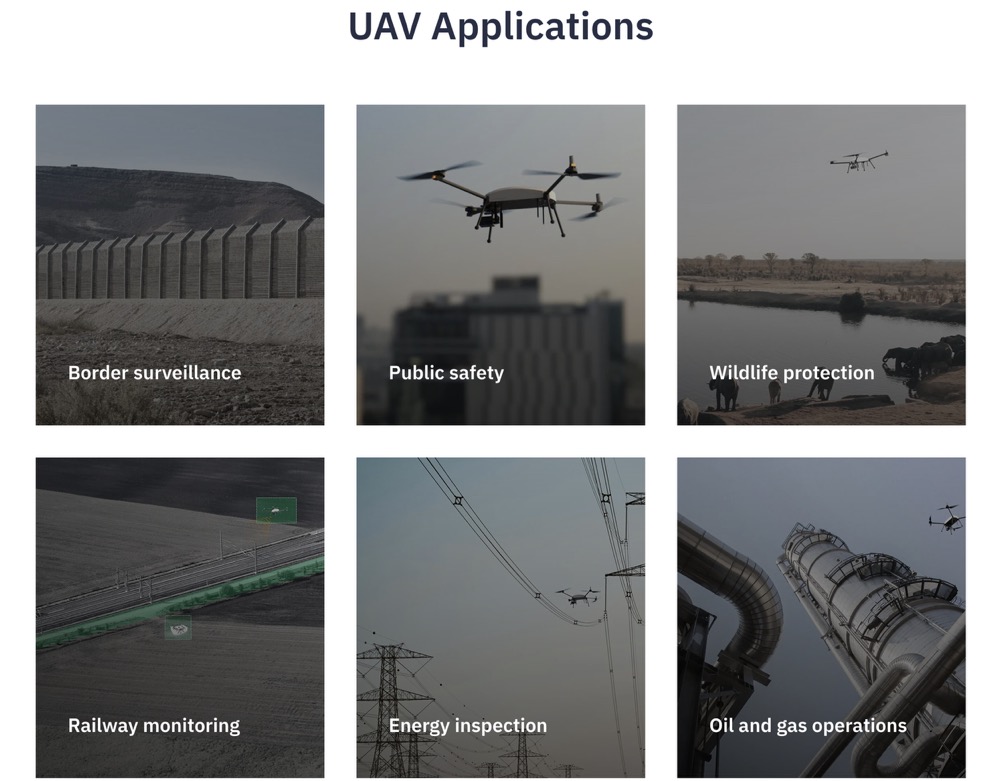 Kim Jong un observes UAV/drone test, development of AI Weapons
Kim Jong un observes UAV/drone test, development of AI Weapons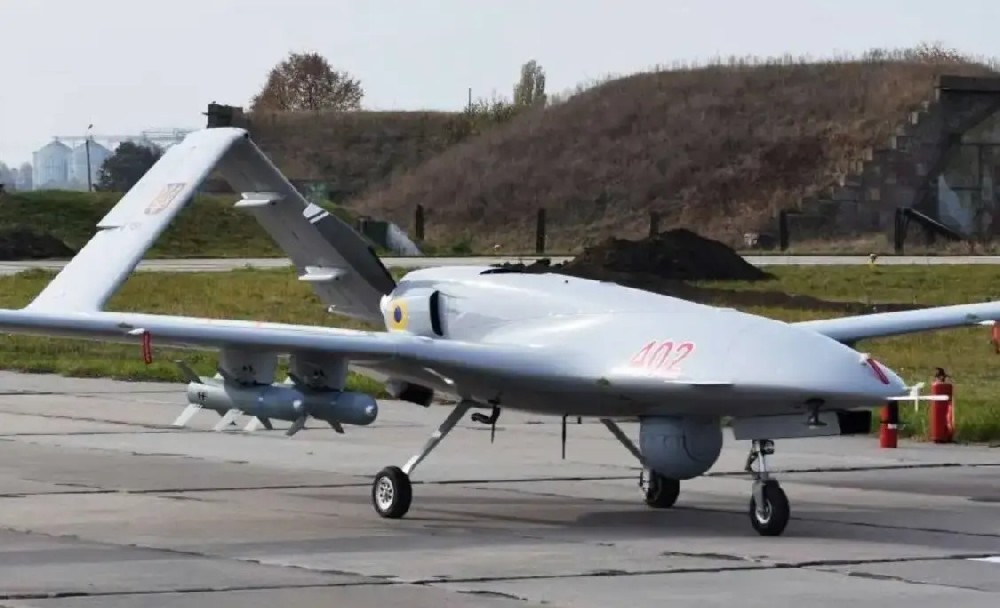 Summary of Drones in the Nagorno Karabakh War and the Russo Ukrainian War
Summary of Drones in the Nagorno Karabakh War and the Russo Ukrainian War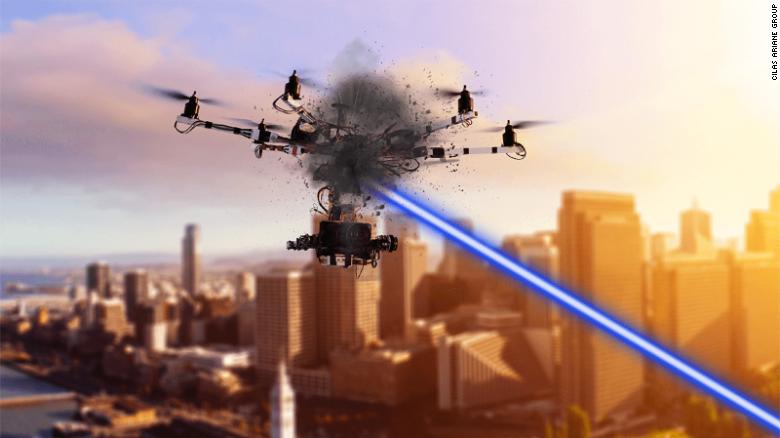 How are drones used on war? drones ruled the war
How are drones used on war? drones ruled the war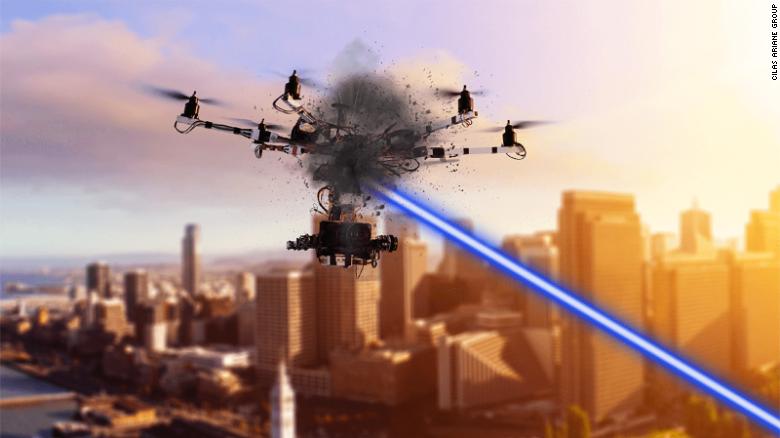 A laser gun for anti drone
A laser gun for anti drone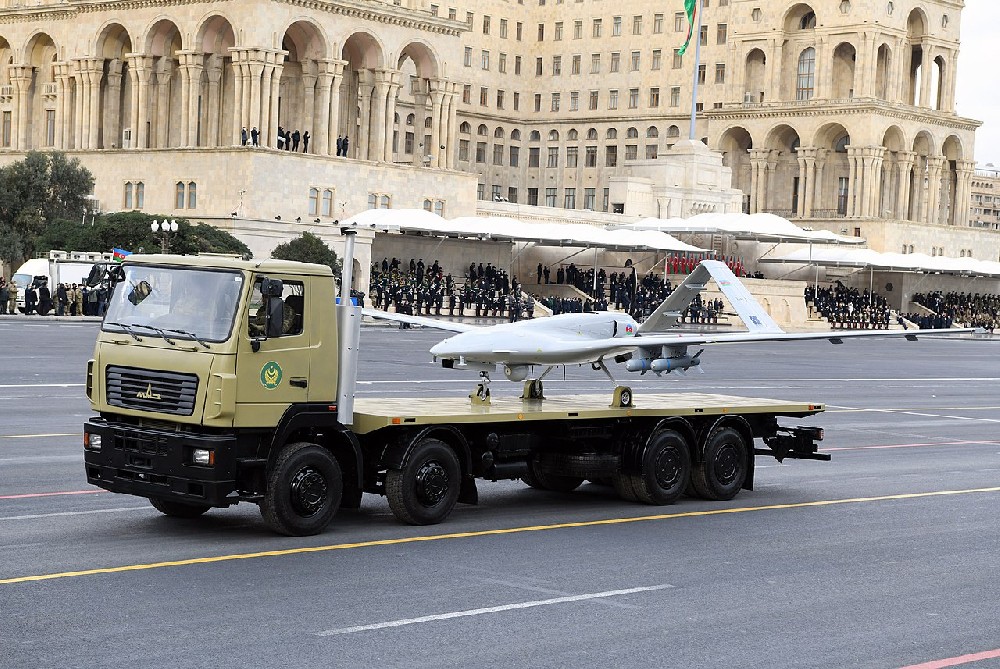 Experience and lessons learned from drones in the Russo Ukrainian War, guide to purchasing drones/UVA
Experience and lessons learned from drones in the Russo Ukrainian War, guide to purchasing drones/UVA
